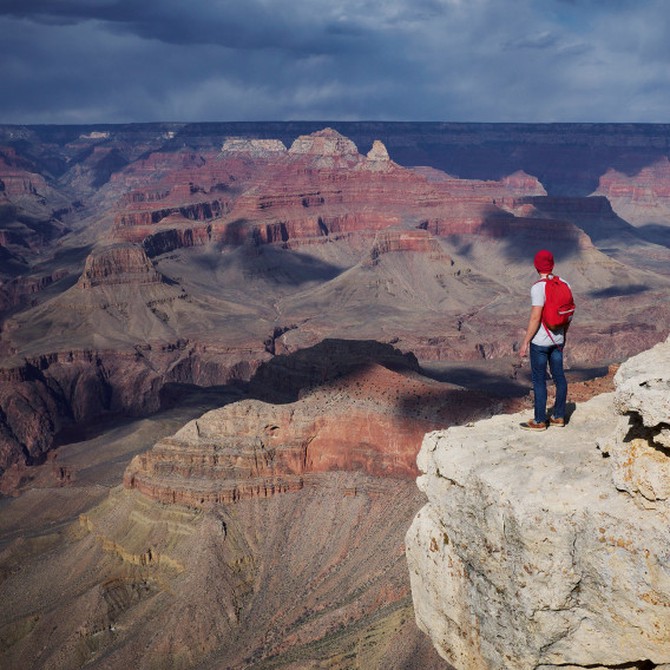10 Bucket-List Trips Based in the U.S.
These incredible destinations—featured in the book The Bucket List: 1000 Adventures Big & Small should be the first ones you check off.
By Kath Stathers
7. Hike to the bottom of the Grand Canyon and back up again.
ARIZONA, US
When: Spring and fall are ideal
Latitude: 36.0544°N Longitude: 112.1401°W
It is one of Earth's most impressive geological formations, hewn into shape over millennia by the Colorado River, and it's easy to see why the Grand Canyon is considered a holy site by the Native American people. It's also the ultimate place to hike. The spectacular views go without saying—this is a true wonder of the world—but there's so much more to learn about the canyon during a stroll through it; it may look arid, for example, but there are 1,737 known different species of vascular plants to look out for.
The classic hike is the rim-to-the-river-and-back trip, which must always involve an overnight stay. A full descent involves setting off from an elevation of around 10,000 ft (3,048 m) and carefully winding down the trails. It can be bone jarring, but the sense of solitude, wilderness, and silence you experience makes any aches or pains worthwhile.
The ever-changing environment as you descend into the canyon is a truly great pleasure. And there are many types of animals to spot, including bald eagles, beavers, coyotes, bobcats, tarantulas, six kinds of rattlesnakes, and even mountain lions (that, thankfully, tend to stay well away from humans).
After staying overnight in the canyon (many head to Phantom Ranch), the return trip—uphill—is far more demanding than the descent. Any hike in the Grand Canyon should be very carefully planned, and most people report that they found it more difficult than they had first expected. More than 250 people are rescued annually!
Published 08/02/2017
As a reminder, always consult your doctor for medical advice and treatment before starting any program.


